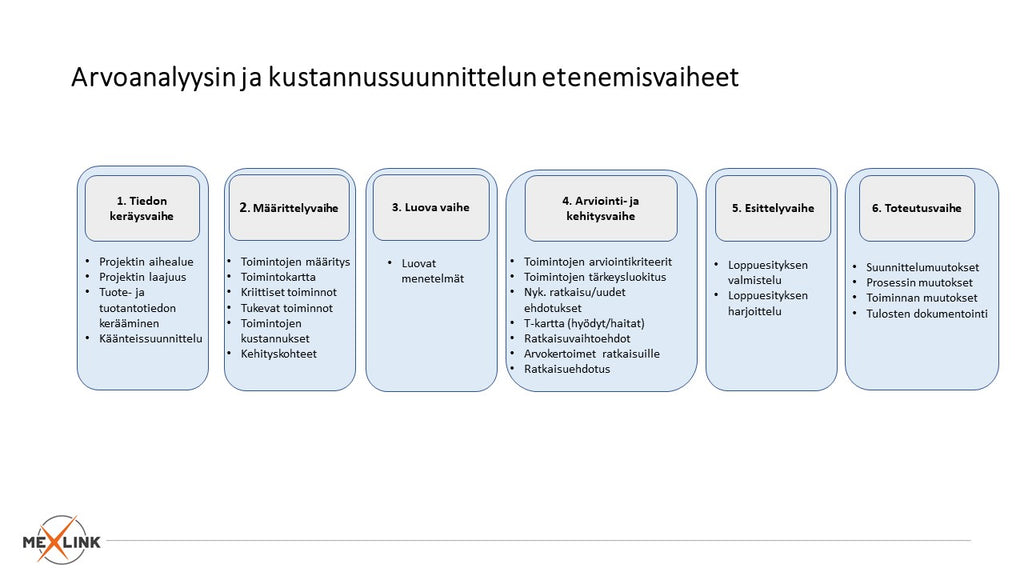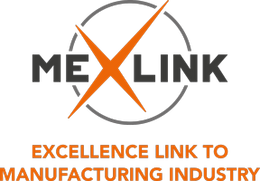VALUE ANALYSIS AND COST PLANNING (Value Analysis / Value Engineering - Part 2) by Pentti Enlund
Posted by PASI JULKUNEN

Value analysis and cost planning are commonly known as Value Analysis/Value Engineering , VA/VE. It is a disciplined system of action with only one goal; produce functions that the customer needs and wants, at the lowest possible costs, without compromising the quality or functionality of the product.
The purpose of the method is to simultaneously develop the planned product (VE) and its manufacturing process (VA), in the product development phase , before entering production. VA/VE can be defined as a planned and unprejudiced way of approaching problem solving, focusing specifically on the features specific to product models and processes.
It is, above all, a consensus-based problem-solving process of a multi-professional group. The effectiveness of the group depends directly on the support and commitment of the company's management.
The body of the process consists of a systematic planning process to reach the set goal (Figure 1). The first step is to map the requirements of customers/customer segments for the planned product and collect all available information about the design object. After this, the information is reviewed and analyzed precisely with the help of functional analysis , looking for opportunities to increase the customer value of the product. In the creative phase, brainstorming is used to find ways to achieve the functions of the product or its manufacturing process identified in the previous phase, with a smaller number of components, substitute materials, fewer process steps, eliminating or combining functions, without sacrificing product quality or functionality. In the next, evaluation and development phase, the generated ideas are evaluated, developing evaluation criteria for each function (performance, reliability, feasibility, etc.), forming an importance rating and comparing the presented solutions with an existing solution. Finally, the presentation and implementation phase is performed.

VA/VE differs from other cost reduction techniques in that it is focused on the functions of the product instead of just reducing costs. It utilizes many well-known interconnected cost reduction techniques in a systematic way, such as e.g. cost analysis, cost evaluation, sale of ideas, etc. A technique that differs from other methods is function analysis, FAST, the systematic use of which identifies the functions required of the planned product or process and their costs, giving the functions a calculated value and enabling manufacturing at the lowest possible cost.
What is meant by product value?
The definition usually used for product value is “Reliable performance of what a product, production process or function needs to do in order to work or sell, at the lowest possible cost ”.
The definition refers to two important key variables:
- A performance or function includes all the factors that a product, process or operating method must do in order to function and sell at the lowest possible cost .
- Cost consists of activities that include time, money, people, energy or materials.
Based on these definitions, a formula can be defined for value: VALUE= FUNCTION/COST
The purpose of the VA/VE method is to improve the value of the product or process :
- By reducing costs and simultaneously increasing functions
- By reducing costs and maintaining function and performance
- By adding functionality and keeping costs constant
- By increasing functionality and at the same time increasing less cost
- By reducing functions (only extra features) and at the same time proportionally more costs.
The relative value of any product depends on how effectively available tools, materials and processes have been used and analyzed. In theory, it has been established that the maximum value of a product or process is never reached, therefore continuous value improvement is possible.

As you know, there is a new article coming in January, in which I will examine the most important part of the entire VA/VE process, functional analysis, i.e. Functional Analysis System Technique, FAST
Pentti Enlund
Mexlink Oy
 English
English Finnish
Finnish Swedish
Swedish German
German

